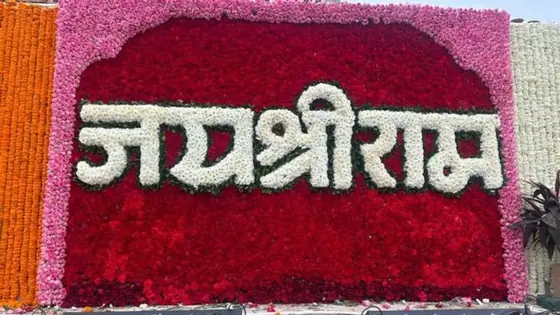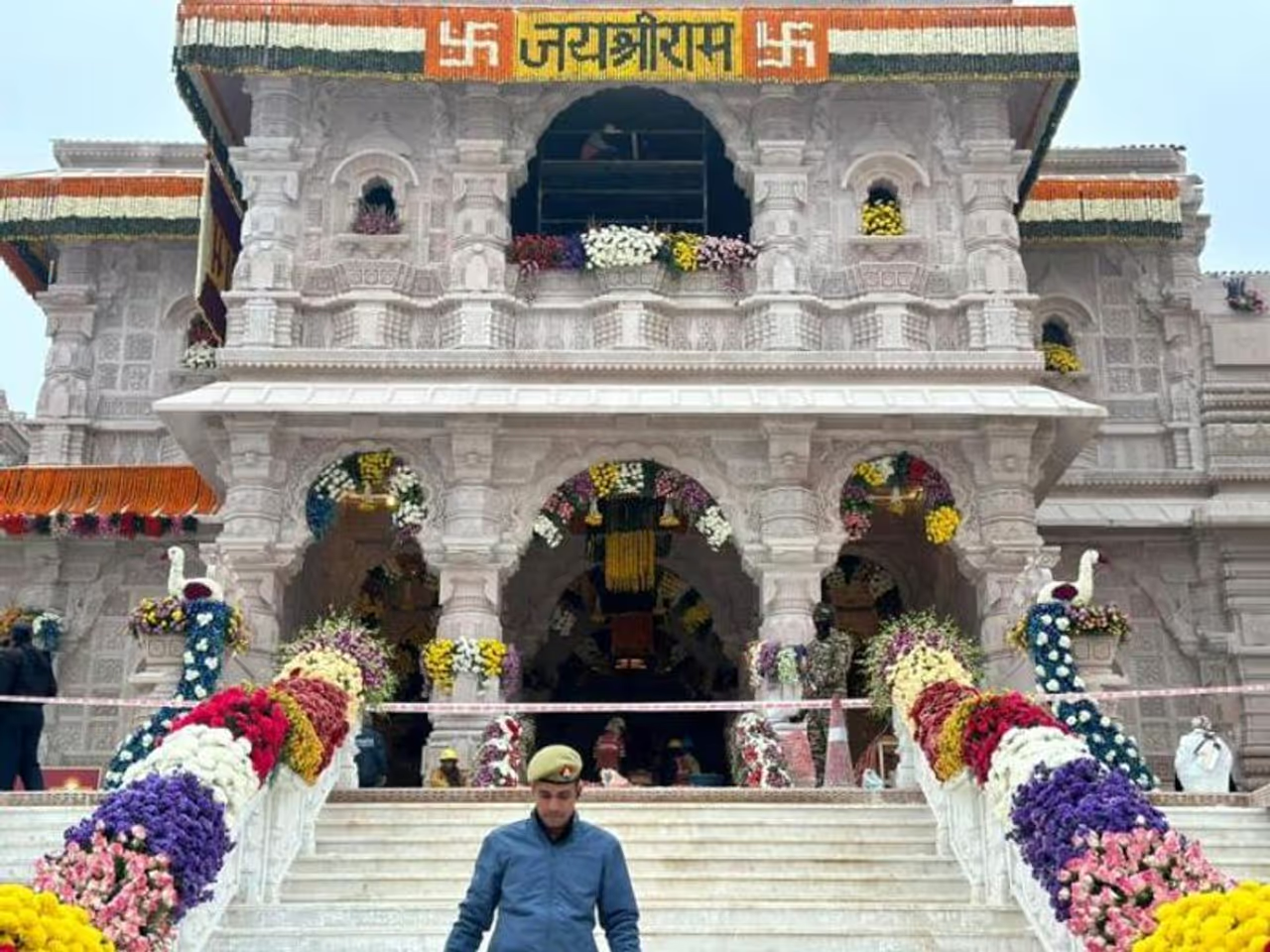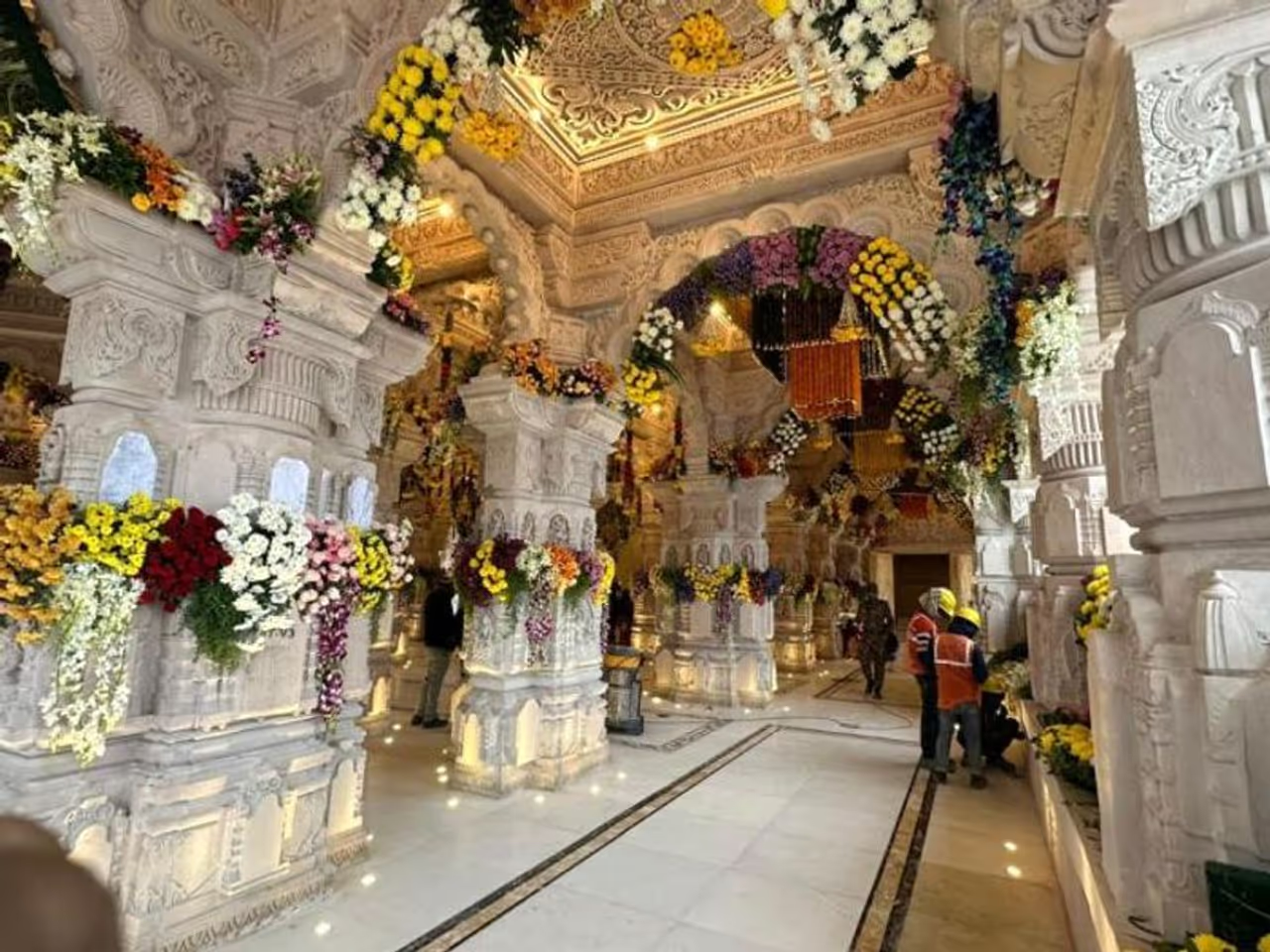
EXCLUSIVE Access! Inside The Magnificent Ram Mandir
Asianet News Network has been at the forefront of covering the construction journey of the Ram Mandir in Ayodhya, providing exclusive access to the site on three occasions. Ahead of the Pran Pratishtha ceremony, the network once again gained entry into the new abode of Lord Ram.
Asianet News Network has been at the forefront of covering the construction journey of the Ram Mandir in Ayodhya, providing exclusive access to the site on three occasions. Ahead of the Pran Pratishtha ceremony, the network once again gained entry into the new abode of Lord Ram. Nripendra Misra, Chairperson of the Shri Ram Mandir Construction Committee, previously shared insights into the temple's grandeur. During its latest visit, Asianet News Network explored the temple area, which spans 2.7 acres, detailing the devotees' path to the main idol.

Click HERE to access our special coverage of the Ram Mandir consecration

The temple complex comprises an outer wall, a 795-meter 'parkota' with five temples and a sanctum sanctorum inside, where the main idol is housed. Devotees can perform parikrama in this sacred space. The length of the temple, from the sanctum sanctorum to the first stair point, is approximately 400 feet.
On the ground floor, five structures and the sanctum sanctorum are prepared for the 'Pran Pratistha' ceremony marking the grand opening on Monday. Nripendra Misra assured that the temple, designed to last over a thousand years, excludes iron and steel in its construction. Sensors have been strategically placed in the temple's foundation to monitor any impact on its stones, including seismic activity.

Misra explained that the sensor reports are regularly reviewed by Larsen & Toubro, the construction firm, and forwarded to the Central Building Research Institute in Roorkee for analysis and research on construction solutions.
The garba griha on the ground floor holds the idol of Ram Lalla, marking the completion of this segment. The ongoing construction is focused on the first floor, where the Ram Darbar, featuring the idol of King Ram with Sita, his brothers, and Hanuman, will be housed. The second floor will host approved religious observances.

The temple complex will feature two Ram Lalla idols, including the primary black stone idol crafted by Arun Yogiraj, and the one currently worshipped in the temporary temple. The latter, believed to have appeared in 1947, will be moved to the new temple on Sunday evening.
Anticipating around 125,000 daily visitors, Misra noted that the temple, open for 12 hours, will afford each devotee approximately 25 seconds in the divine presence of Lord Ram. On Ram Navami, with devotee numbers swelling from 300,000 to 500,000, this time may be reduced to 17 seconds.

An extraordinary celestial event is planned for Ram Navami, where at noon, sun rays will enter through the Shikhar and fall on the forehead of Lord Ram. This event has been meticulously calculated and verified by the Central Building Research Institute and its astrophysics department in Pune. A computerized gadget is being developed to ensure everyone witnesses this divine occurrence, with screens strategically placed for devotees throughout the Ram Mandir complex.
Describing the Ram Mandir as a blend of modernity and faith, Misra emphasized the compatibility of architectural design with the target of lasting 1000 years. The temple stands as a testament to faith, dedication, and meticulous planning, set to inspire devotion and reverence for generations to come. Ayodhya's sanctum sanctorum, with its rich history and divine aura, is poised to become a beacon of spirituality.
Click HERE to access our special coverage of the Ram Mandir consecration